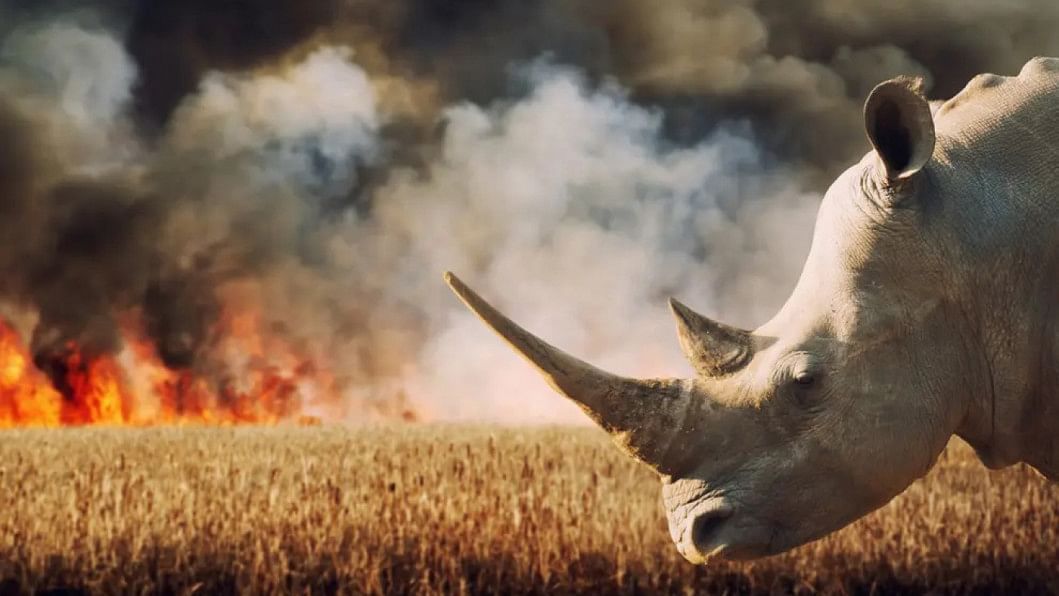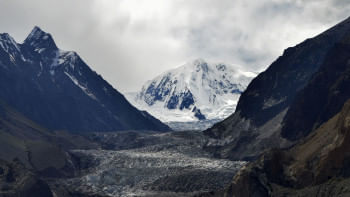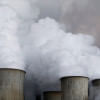Are we headed towards the sixth mass extinction?

Over the past 540 million years, a short period of time on the geological scale, there were five events of mass extinction, caused by such things as severe ice age, an asteroid impact, invasive species taking over the planet, reconstruction of the Earth's crust some 250 million years ago, and other forces of nature. The most recent was 66 million years ago, which led to the extinction of dinosaurs. During each extinction, more than 75 percent of all species on the planet died.
Extinction is also a natural process. A species may become extinct and be replaced by another species, or it may gradually evolve into one or more new species. An important aspect of natural extinction is that niches remain occupied, but the species filling them change radically. The demise of the dinosaurs, though not natural, gave new species an opportunity to grow, from which human beings eventually evolved.
With the introduction of humans as an ecological factor, there has been a shift from the gradual, natural replacement-type extinction to an abrupt niche-emptying extinction. The way humans have attacked the species of the world varied from outright assault to insidious nibbling, both of which have the same destructive result. Many animals disappeared simply because they were edible. Others became extinct because they were fashionable in human eyes. The rate of extinction is now about 1,000 times faster than before humans arrived.
It leads one to wonder whether we are on track for the sixth mass extinction. Many scientists believe that the question is not "whether," nor "if," but "when." And this time, the cause will not be global cooling or asteroid impact. It will be the work of a single species ‒ Homo sapiens – driving themselves to extinction.
The UK-based Global Challenges Foundation lists nuclear war, pollution and climate change, overpopulation, biotechnology, and pandemics as the most viable threats to the existence of humans.
Of the many possible scenarios, nuclear conflict is the most likely one by which human civilisation will become extinct. Our vulnerability to this threat is growing because of the escalating political tensions between nuclear-armed superpowers.
In an open threat of a nuclear war, Russia's Security Council Deputy Chairman Dmitry Medvedev did not mince words when he publicly said that a defeat for Russia in the war against Ukraine could provoke a nuclear war. Meanwhile, the head of the Russian Orthodox Church, Patriarch Kirill, warned that "an attempt to destroy Russia [by Nato using Ukraine as a proxy] will mean the end of the world."
With the entrance of man as an ecological factor, there has been a shift from the gradual, natural replacement-type extinction to abrupt niche-emptying extinction.
Yes, the patriarch is spot on. Today, the US, Russia, and China possess enough nuclear weapons to kill every man, woman, and child on this planet. If any of these countries initiates the use of such weapons, especially against another one that possesses them in abundance, the inevitable result will be the annihilation of the human race.
If we are spared the nuclear holocaust, then pollution and anthropogenic climate change will be responsible for our extinction. Today, we live on a planet poisoned by toxins dumped by us. The toxins are in the food we eat, the water we drink, and the air we breathe. As the renowned explorer and environmentalist Jacques Cousteau said, "Water and air, the two essential fluids on which all life depends, have become global garbage cans."
Such a society cannot live forever.
Climate change per se is unlikely to cause our extinction. However, the synergistic feedback of the continued emission of planet-warming greenhouse gases (GHGs) can trigger the onset of "runaway greenhouse effect," which will eventually turn the Earth into an inferno with virtually no life. Several billion years ago, Venus was an Earth-like planet with an abundance of water in oceans overlain by an oxygen-rich atmosphere. The current hellish condition on Venus where the surface temperature is a blistering 460 degrees Celsius was caused by runaway greenhouse effect.
A rapidly growing human population is putting us in the throes of extinction. With a population that increased three-fold since 1950, food, water, and a whole lot more required for sustenance of life in the future will be in short supply. In fact, we are surviving today by stealing from the future. Hence, it is not unlikely that once the population reaches a "critical mass," natural resources vital to our survival will not be adequate enough to support us, unless we can replace them with sustainable alternatives. As a result, starvation will bring us face-to-face with extinction.
The misuse of biotechnology is another existential risk. With the advancement in DNA manipulation technology, it is quite likely that scientists working for a roguish state actor or a terrorist group can engineer a "superbug" for biological warfare, and in the process obliterate our entire civilisation. Besides, the abuse of biotechnology to develop deadly, quick-spreading pathogens that can hasten our extinction cannot be ruled out. For example, the pathogen often called the Spanish Flu, which killed an estimated 50 million people worldwide in 1918 and 1919, was resurrected by a group of US scientists in 2005. And a professor in the Netherlands came under fire in 2011 when he engineered a deadly, airborne version of the flu virus and attempted to publish the details of his work.
We cannot rule out the possibility of fast-spreading devastating diseases, such as Covid-19, which, according to the World Health Organization (WHO), claimed at least three million lives since 2020. In the past two millennia, besides the Spanish Flu, the other pandemics that can be labelled as global catastrophes of a bigger magnitude were the Black Death of the 1340s that felled more than 10 percent of the world population, and the great Plague of Justinian in 541 and 542 that wiped out an estimated 13-17 percent of the global population at that time.
Surreal as it may seem, we have clearly embarked on the path to self-annihilation. Indeed, several recently published scientific studies warn that the sixth mass extinction is already underway. Lest we forget, our ancestors – Neanderthals, Denisovans, Homo erectus – became extinct, leaving just their descendants, the Homo sapiens, to follow them. The question is: How soon?
Dr Quamrul Haider is a professor of physics at Fordham University in New York, US.

 For all latest news, follow The Daily Star's Google News channel.
For all latest news, follow The Daily Star's Google News channel. 










Comments